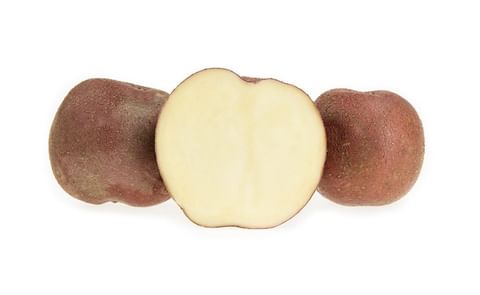In the United Kingdom, potato Late blight fungicides Consento and Prompto (fenamidone + propamocarb) have gained label extensions for protection of potato crops against Early blight (Alternaria).
Bayer’s Neil Thompson says this confirms their unique role as dual-purpose products for use during the rapid canopy growth phase. “Their fenamidone component provides good protection against primary Alternaria infection – which can come in two to four weeks from emergence – and propamocarb brings the systemic activity needed to protect new growth against Late blight.”
Although Markies is now acknowledged as the variety most susceptible to Early blight, many others can become susceptible when stressed. Over the last two seasons Agrovista technical manager Dr Mark Palmer has seen it affect crops of Estima, Saturna, Maris Piper and Lady Rosetta. Worst cases have been where growers have held back on nitrogen.
“With Early blight timing is key as the fungicide options are protectant,” he advises. “This means growers of susceptible varieties need to build fungicide programmes that include the necessary protection while still achieving the main objective of securing Late blight control.
“Consento provides the required dual activity through the rapid canopy growth phase. From stable canopy onwards Electis (zoxamide + mancozeb) is an appropriate dual activity option to bring in and adding mancozeb to the core Late blight programme also helps to bolster protection.”
However Mark warns that high Early blight infection risk periods – created by warm, dry weather in alternation with short periods of moisture – tend to be more frequent from mid season onwards.
“At these times, you have to work in the Alternaria specific treatments;Olympus (azoxystrobin + chlorothalonil) or Signum (boscalid + pyraclostrobin).”
Previous history is also an important consideration in disease management. “Susceptible varieties grown in the close vicinity of fields where crops were infected with Early blight the previous year are more at risk. Like Late blight, the pathogen survives on dumps and volunteers are the primary innoculum source. It’s yet another reason to be strict with hygiene measures,” he concludes.
主标签
Potato fungicides approved for Early blight (Alternaria) protection
Like to receive news like this by email? Join and Subscribe!
Get the latest potato industry news straight to your WhatsApp. Join the PotatoPro WhatsApp Community!
精选企业
Potato varieties mentioned
Sponsored Content
Sponsored Content
Sponsored Content
Sponsored Content









